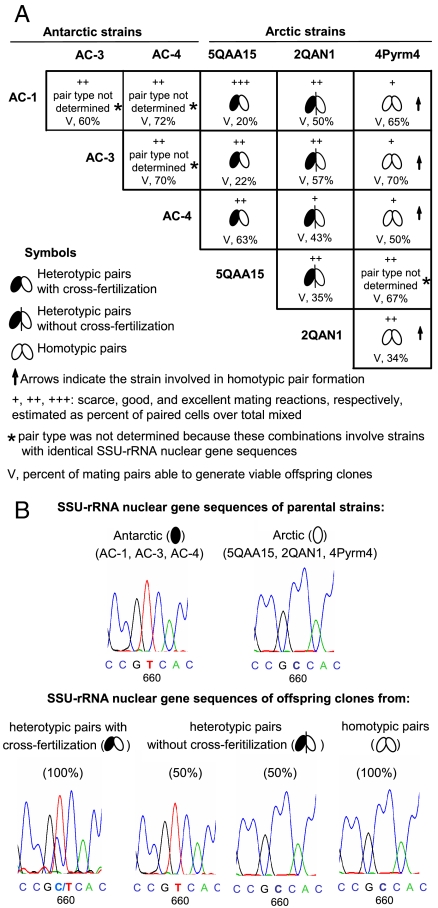Fig. 2.
Mating interactions between Antarctic and Arctic E. nobilii strains. (A) For each two-strain combination the corresponding box indicates the intensity of mating interactions given on a four-step scale, the types of cell mating pairs formed, and the viability rate computed as percentage of ex-conjugant cells that were able to develop a new nuclear apparatus and expand into fully viable progeny clones. (B) Schematic presentation of the utilization of the strain-specific SSU-rRNA gene sequences to distinguish the different types of mating pairs formed by mating mixtures between Antarctic and Arctic strains. The numbers below the sequences indicate the positions showing nucleotide variations that are distinctive between the Antarctic and Arctic strains. The heterotypic pairs with cross-fertilization are unique in generating offspring clones with hybrid sequences characterized by a double C/T peak at the position 660, whereas the heterotypic pairs without cross-fertilization and the homotypic pairs generate offspring clones with unchanged sequences with respect to the parental strains.

